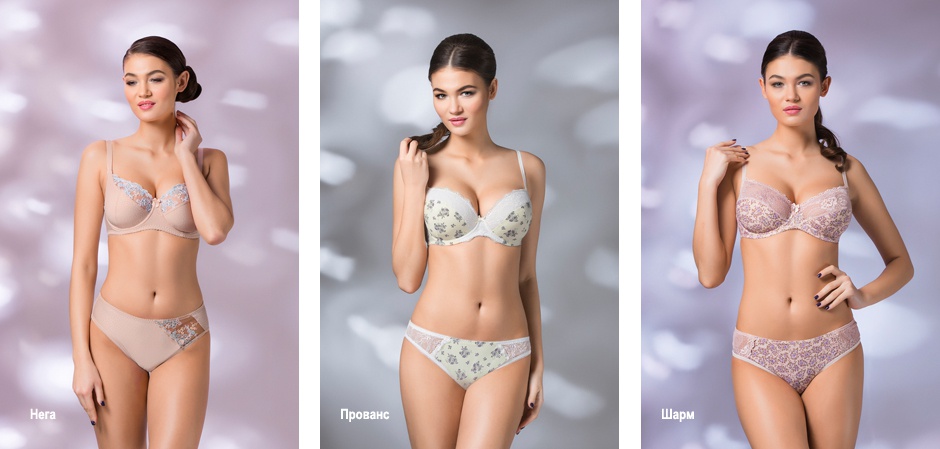From the past to the future
part 1 part 2
 |
Saberzanova Yulia,commercial director of the Russian factory for the production of corset underwear. He has been working in the industry for 15 years and has been engaged in the commercial side of the segment for more than 10 years. Considers sales to be the vanguard of any activity. Based on practical experience, Yulia is ready to share it in articles on key issues of the underwear industry. |
Underwear as a segment of the fashion industry in Russia has a number of key features, formed primarily under the influence of climate. This applies to corset underwear, and knitted, and pre-bed, and corrective. Of course, the thermal underwear and swimwear sector did not escape the same fate. Almost all over Russia, these types of underwear are present in the assortment of specialized and department stores.
Such diversity poses difficult tasks not only for store owners, but also for manufacturers. They are forced to either grab the production of all kinds of underwear, or concentrate on one of them, always doubting the correctness of the choice.

I want to draw attention to the fact that the possibilities of linen production are not unlimited. They are divided, as a rule, as follows:production of corset and pre-bed linen, production of knitted and thermal underwear and production of swimwear. Such a separation is caused by the peculiarities of the fabrics used and, as a result, the need to use special equipment.
In addition to climatic features, it must be remembered that Russia is a huge country with a colossal length both from east to west and from north to south, and in each region there are physiological and cultural differences concerning not only clothes, but also underwear.
"Another powerful factor that leaves its mark on the Russian laundry industry is, without a doubt, globalization. The presence of global networks in the country is reflected in the consumption of underwear.
Saberzanova Julia
More recently, a customer, getting into a store, chose a product with her heart rather than with her mind – underwear belongs to a group of spontaneous purchases made primarily under the influence of emotional factors. This situation was in the hands of the manufacturer. It was possible to produce any underwear, and almost every one found its buyer. Moreover, Russian women have always been closer to the sexual component of underwear. Hence the dubbing, the love for push-ups that came to Russia so late and which our ladies, it seems, will never get enough of. The Russian market is very attractive for foreign companies. It is considered limitless, and, according to various estimates, its capacity is estimated at millions of pieces of sales. In this seemingly favorable environment for the manufacturer, Russian linen factories were developing in different ways. The fastest start was acquired by those who were able to attract foreign investment or acquire foreign technologies. Those who did not have such an opportunity have gone through a more thorny path associated with the development of technologies and structures, and sometimes with the invention of them.
One of the main problems of Russian lingerie manufacturers, as in the entire industry as a whole, is the lack of professional personnel, designers and technologists. Hence the slow pace of the introduction of new technologies, the development of new models. Only a few years ago, the specialty "underwear designer" appeared in Russian industry universities.
"I can't help but mention another negative factor affecting the development of the lingerie industry in Russia. This is the complete absence of domestic production of fabrics for sewing underwear.
Saberzanova Julia
The turn of the century was marked by the beginning of the work of large distributors, in whose warehouse there were up to a hundred items of goods. Contracts were concluded with a variety of brands in an attempt to represent as many brands as possible. Important distribution centers were the wholesale markets of Luzhniki and Cherkizovsky, which were flooded with a huge number of goods produced in Ukraine, the Baltic States and other countries. The underwear market of the early 2000s was chaotic – the assortment of wholesalers and retail stores often formed spontaneously.
From about the middle of the first decade of this century, companies appeared on the Russian underwear market that planned the assortment quantitatively and qualitatively and sewed their products in China. At the same time, innovative products for Russia came to our market - a molded cup in a variety of colors and capsule collections. The availability of plans for the release of models allowed buyers to plan a budget for sales of a certain assortment and brought the underwear trade to a qualitatively new level. The sales results of the assortment of these companies were simply magnificent.The end of the first decade of the current century was marked by the flourishing of the Belarusian company "Milavitsa", which rightfully became the leader of the linen industry in the post-Soviet space. On the part of Russian manufacturers, there was a transition to the production of models according to the production plan and a very intensive introduction of new models, for which the use of innovative materials for the production of underwear is necessary.
The crisis of 2008 in the Russian market was passed relatively painlessly, and the period of 2010-2011 was marked by a new wave of sales growth for the Russian linen industry. Thus, practically from the mid-90s of the last century until the end of the first decade of this century, the Russian underwear market is characterized by intensive growth and rapid development. Among his achievements, it is necessary to note the gradual transition to production planning and the segmentation of the linen market, as a result of which both production and trade organizations received a narrower specialization.
To be continued.
Author: Yulia Saberzanova
Photo: Valeria